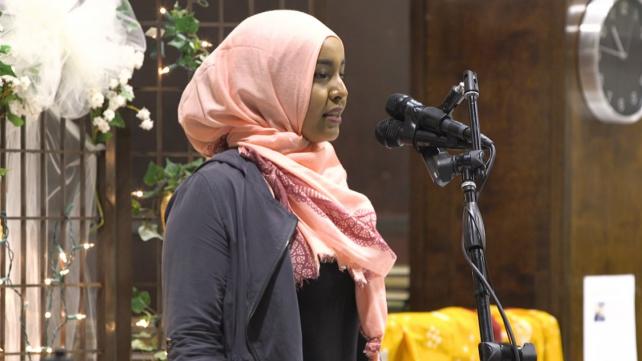
“Youth are the future of this community.”
“Youth are the torchbearers of Islam.”
“Young Muslims are our top priority!”
How many times have we heard these empty slogans at our Masjids?
Unfortunately, these aspirations of our Masjid leaders and Imams, though often sincere, are not reflected in the prioritization and allocation of time and resources.
If youth development or youth engagement is not on the agenda of our board meetings, how can it be a “priority” for our Masjid or organization?
If young Muslim women and men are not even part of our board, committees, or leadership today, how can we expect to pass on the torch to them tomorrow?
If there is no budget item for youth work or youth engagement, why proclaim our commitment to serve and save the next generation of Islam?
We have already neglected at least two generations of smart, educated, and faithful young Muslim men and women in North America.
This systemic neglect on our part as community leaders and organizations has resulted in many young professionals distancing themselves from traditional places of worship. There is an entire “unMosqued” movement born out of this frustration. Many young, practicing Muslims have been looking for “third spaces” to activate their volunteer efforts.
Although some Masjids and Islamic centers have become more youth-conscious and youth-friendly over the past decade, we have a long way to go in terms of meaningful youth engagement.
Here are some conceptual and practical tips to rethink and reorganize our Masjids, Islamic centers, and community organizations for positive and effective youth engagement.
1. Rethink the Masjid as an “exclusively religious space”.
“We need to start utilizing our Masjids outside the exclusive religiosity,” advised Boonaa Mohammed, an award-winning writer, producer, and spoken word performer in Canada. “Hassan bin Thabit, the famous prolific poet of the Prophet, peace be upon him, recited and performed poetry in the Masjid,” Boonaa continued. We need to break the “stigma of religious spaces”. This means designing the look and feel, as well as the culture of your Masjid to be youth-friendly. Read more tips on youth-friendly Masjids by Samana Siddiqui.
2. Go beyond the “youth center” claim.
Most people in our community don’t buy it anymore. They have seen so many Masjids raising funds for a theoretical “youth center”, which is often an invisible part of the construction plan, to be built a generation or two later. Instead, invest in designing unique youth programs and services. Before you build a gym, build a team of energetic young Muslim leaders who can run these facilities.
3. Before you build a minaret, hire a youth director.
This would be the ultimate proof of your commitment to youth engagement at your Masjid or center. Hiring an experienced youth worker who can relate to and mobilize youth is as critical as hiring a qualified Imam and administrator. Those few Masjids across North America that have recruited a youth coordinator/worker, have seen their entire congregations and community transform into a lively hub.
4. Publicly consult youth to transform your Masjid or organization’s culture.
It takes time and listening to develop events and projects that young Muslims really care for. It requires significant consultation with youth, research on best practices in the mainstream and Muslim communities, and restructuring of your organization’s human and financial resources. Have a print and online survey for youth to submit their ideas. Organize a focus group session with key young leaders.
5. Invite young leaders to join your board and treat them like leaders.
Young Muslims are smart, tech-and-media-savvy, and creative. Mentor them with your experience and wisdom, and give them room to experiment and make mistakes. Don’t treat them or their work as insignificant. Value and recognize their contribution to the organization and the community.
6. Allocate 20% of your annual budget for youth development and engagement.
Yes, it may sound a lot, but it will pay off more than your investment. Remember, over 30% of Muslims in Canada and the United States are youth! Please read more on how to reorganize our time and donations for community empowerment by Imam Abdul Malik Mujahid.
7. Adopt a local MSA by building a working and supportive relationship with the MSA leadership.
Offer your Masjid space for off-campus programs. Build your MSA chapter’s capacity by donating and sharing resources as needed. Offer counselling and other youth services at your Masjid with the help of your youth director. Develop joint creative programs with the MSA to engage more young Muslims.
8. Go beyond “youth lectures”.
Engagement is more than educational lectures. Given the limited attention span of youth and the culture of distractions, thanks to the explosive growth of social media, texting, and gadgets, most youth are not interested in one-way communication. Youth engagement, from a programming perspective, requires interaction, entertainment, and experiential learning. For more concrete ideas for proven youth engagement events, please order a print copy of Sound Vision’s Youth Engagement Manual for Masjids and Community Leaders.
9. Make your youth programs and facilities accessible.
When some churches in the US wanted to win back youth, they realized young folks stay up late at night, and hence began to hold programs during the late evenings. Similarly, some Islamic centers today have been allowing youth to play basketball or soccer in their gyms late nights, especially on weekends. For the same reason, organizing an early morning weekend event for youth could be disastrous, as most young people sleep in on Saturdays and Sundays.
10. Realize, young people are not “lazy” or “non-committed”, as they are often perceived.
It’s the way too many Masjid and community leaders engage them that is old school and doesn’t work. Before you engage young Muslims as volunteers and leaders, restructure and rethink your volunteer recruitment methods. Experience and research has shown that generation Y and Millennials (those born in the 1990’s and beyond) think of volunteerism very differently than their parents do. It’s no longer enough to have youth “sign up” and expect them to just show up at the next event to volunteer. Similarly, giving them fancy titles without involvement in decision-making and without proper expectations and accountability mechanisms doesn’t work. Here are some key volunteerism trends found in these generations, both in the Muslim community and outside:
a. Young people are brand-conscious. “Muslim youth are most attracted to big brands and big events that have impact,” explains Shahmir Durrani, a youth leader and an advisor to Muslim Youth Federation based in Toronto, Canada, focused on high school students. “They take pride in their Muslim identity as they volunteer for known organizations and causes.” Develop programs and projects that have a visible impact in the community.
b. Young people are looking for results. “They are result-driven,” says Durrani, “as they have limited time, juggling school, socialization, family, and volunteer work.” They don’t like to be involved in long meetings and elaborate planning. As research has also shown, this “Googlized Generation” is looking for instant gratification. They want results now. Ensure the events and activities you involve youth produce concrete results, such as working in a soup kitchen, fundraising gala, art competition...etc.
c. Young people are looking for flexible leadership structures and opportunities for growth. Yes, most Muslim youth don’t stick around an organization or commit to a cause for years, unlike our elders. “They are seeking growth opportunities and challenging roles in an organization.” This requires flexibility and agility in your organizational structure. Every time millennials commit to a cause or event, they are asking “what’s in it for for me”, in terms of experience and growth. While this isn’t an ideal Muslim leadership trait, this is the reality of youth activism culture you have to cater our volunteer recruitment strategies to.
d. Young people are looking for exclusive or unique experiences. For young volunteers or leaders, it isn’t just a sense of satisfaction and opportunity to socialize and grow with like-minded people that is important. “An exclusive experience, such as access to a scholar, an artist, or VIP is also a major motivation,” elaborated Shahmir Durrani. In this culture of selfies, live broadcasts, and instant social media sharing, such exceptional volunteer experiences go viral. Think of creative ways to make the youth volunteer experience special and exceptional if you want youth coming back.
Order Your Copy of
"Youth Engagement Manual for Masjids, MSA's and Community Leaders"
Photo Credit: Young Muslim Women's Association, Auckland









Comments
Responce
Unfortunately nowadays Muslims restrict religion within four walls of masjid. At the time of Prophet (pbuh) masjids were their parlements, meeting hals, schools & university. But we fail to use this platform for these activeties. Today's mullahs even read jumma khutba in Arabic which majority of people can't understand what he is saying.
Location
Add new comment